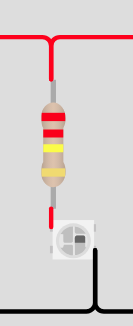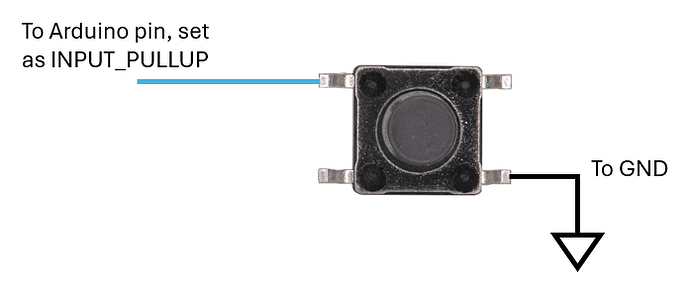Or forget about RTC and just use WiFi and NTP.
That was my personal preference in post 16 ![]()
My project will work like this; According to the time information received from the RTC module, the LED showing the current time will turn on. Minute information will be displayed on 2 7-segment displays.
This is the draft I prepared for this project based on the valuable information I received from you.
Do you think it is a correct draft?
All you did was draw a picture. Sketch is blank.
Hard to tell; the wiring diagram is even more difficult to read than usual due to the spaghetti wiring being all of the same color. I'd recommend starting with an actual schematic diagram first to get a review here.
I have prepared a project draft like this. Can we talk about it? For example; Is my system setup logic correct? If there are any errors, where are they and what should I do to fix them?
I don't think so.
Wire a button like this:
Two connections, no resistors.
I'd place some pullups on the I2C lines, just to make sure/hedge against long wires/noise. Use something like 3k3.
These look like WS2812 addressable LEDs. Is that correct?

If so, they won't work this way. Or did you mean to select a regular, passive LED instead? Note that your simulation won't work the way it is now.
I did not verify the shift register + segment displays. The HC595's do seem to wired in parallel; that's probably not what you want. How will your code differentiate between the two of them? The way you've wired this, they will simple mirror each other's behavior.
Moreover - it's a simulation. You can try things out; no need to ask if it's OK. The simulation won't mind if you fry a virtual Arduino; it'll come back to life at the press of a button. Why not break it down to a single button and a single LED, make the code for that (using the simulator) and solve problems as you encounter them? Once you've gotten the button + LED to work, add another part. And then another, etc.
Hello again. Here is the final version of my project. It works very well. I have been testing it for 2 weeks, no problems.
However, I need to add 2 buttons (one for the hour, the other for the minute) but I couldn't figure it out. I am working on it.
I also had an Arduino board but I can't find it. I guess I will have to buy a new one. While doing research, I have this question in mind;
If I buy the original or a clone, will I have problems with the clock working in the future?
If I buy a clone, which clone should I prefer?
I came across two different types, DIP or SMD type. I read the difference between them but I don't know if it is something that concerns me very much.
I would be happy if you could help me. Thanks.
In general, no. There are in principle no systematic problems with Arduino clones. There are a handful of people who claim they consistently have problems with clones, but I've never been able to replicate any of this, nor is it clear how or why they run into these issues.
By buying an original board you of course support the Arduino venture and its future developments. By buying a clone, you give a Chinese business a little money and there's no expected return of value to society accruing from this. For some, this is an argument.
Of what? Arduino boards or switches? Please link to the products you found.
This topic was automatically closed 180 days after the last reply. New replies are no longer allowed.
